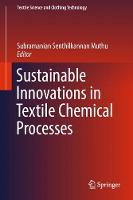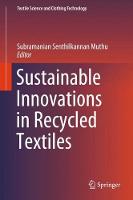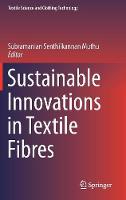Applied Color Science for Textiles
 -15%
portes grátis
-15%
portes grátis
Applied Color Science for Textiles
Computational techniques using MATLAB
Khandual, Asimananda
Springer Verlag, Singapore
07/2021
Dura
Inglês
9789811073137
15 a 20 dias
Descrição não disponível.
CHAPTER 1 INTRODUCTION
1. Introduction:
1 .1 What is color
1.2. The causes of color
1.3. Color constituents
1.4. Witt's theory chromophores, auxochrome, chromogen
CHAPTER 2 COLORING MATTER
2.1. History : natural colors & synthetic dyes, chronological developments
2.2. Dyes and pigments
2.3. Brief on classification: chemical constitution and application
CHAPTER 3 DYEING
3.1. Dyeing theory
3.2. Application of various dyes to various fibres in brief
3.3. Some new dyes, developments, Applications
Chapter 4 MEASURING COLOR, PARAMETERS AND PECEPTION
4.1. History
4.2. Perception, Trichromaticity, Primary and secondary color
4.3 Opponent theory
4.4. Reflection, absorption, scattering, transmittance
4.5. Illuminant and observer, viewing geometry
4.6. Spectral Measurements techniques
4.7. RGB, XYZ, CIEL*a*b*, L*u*V*
4.8. Optical density , Beer Lambert's Law , K/S & its use
4.9. CIE Diagram, Physical significance
CHAPTER 5: COMPUTATIONAL TECHNIQUES WITH MATLAB
5.1. Induction to basic commands
5.2. Computation and visualization of Spectral data and interpretation
5.3. More advanced computation: reflectance data to CIEL*a*b* of various illuminants & Observers, CIE diagram etc.
5.4. Exercises, solved examples for better understanding of spectral data, color parameters
CHAPTER 6: COLOR MIXING THEORY, PREDICTIONS
6.1 . Grassmann's law , Kubelka-Munk theory, advances
6.2. Computer color Matching algorithms
6.3. Neural networks for color predictions
6.4. Metamerism, Fluorescence
6.5. Color Difference, Sorting and Error ellipse
6.6. Analysis and tips for producing exact color from data visualization
CHAPTER 7: IMAGING COLOR
7.1. Inside RGB sensors
7.2. Story of Device dependent color space
7.3. Interacting device independent to device-dependent color space
7.4. Color characterizations and modeling
7.5. Diffused illumination, modeling and rending
7.6. Advances and scope for textiles
7.7. Computation with MATLAB
CHAPTER 8: MORE EXERCISES, SOLVED EXAMPLES
1. Introduction:
1 .1 What is color
1.2. The causes of color
1.3. Color constituents
1.4. Witt's theory chromophores, auxochrome, chromogen
CHAPTER 2 COLORING MATTER
2.1. History : natural colors & synthetic dyes, chronological developments
2.2. Dyes and pigments
2.3. Brief on classification: chemical constitution and application
CHAPTER 3 DYEING
3.1. Dyeing theory
3.2. Application of various dyes to various fibres in brief
3.3. Some new dyes, developments, Applications
Chapter 4 MEASURING COLOR, PARAMETERS AND PECEPTION
4.1. History
4.2. Perception, Trichromaticity, Primary and secondary color
4.3 Opponent theory
4.4. Reflection, absorption, scattering, transmittance
4.5. Illuminant and observer, viewing geometry
4.6. Spectral Measurements techniques
4.7. RGB, XYZ, CIEL*a*b*, L*u*V*
4.8. Optical density , Beer Lambert's Law , K/S & its use
4.9. CIE Diagram, Physical significance
CHAPTER 5: COMPUTATIONAL TECHNIQUES WITH MATLAB
5.1. Induction to basic commands
5.2. Computation and visualization of Spectral data and interpretation
5.3. More advanced computation: reflectance data to CIEL*a*b* of various illuminants & Observers, CIE diagram etc.
5.4. Exercises, solved examples for better understanding of spectral data, color parameters
CHAPTER 6: COLOR MIXING THEORY, PREDICTIONS
6.1 . Grassmann's law , Kubelka-Munk theory, advances
6.2. Computer color Matching algorithms
6.3. Neural networks for color predictions
6.4. Metamerism, Fluorescence
6.5. Color Difference, Sorting and Error ellipse
6.6. Analysis and tips for producing exact color from data visualization
CHAPTER 7: IMAGING COLOR
7.1. Inside RGB sensors
7.2. Story of Device dependent color space
7.3. Interacting device independent to device-dependent color space
7.4. Color characterizations and modeling
7.5. Diffused illumination, modeling and rending
7.6. Advances and scope for textiles
7.7. Computation with MATLAB
CHAPTER 8: MORE EXERCISES, SOLVED EXAMPLES
Este título pertence ao(s) assunto(s) indicados(s). Para ver outros títulos clique no assunto desejado.
Textile Dyeing;Digital Coloration in Textiles;Kubelka-Munk Theory;Metamerism in Textiles;Sorting and Error Ellipse;Diffused Illumination;Device-dependent Color Space;Synthetic Dyes;Chromogen
CHAPTER 1 INTRODUCTION
1. Introduction:
1 .1 What is color
1.2. The causes of color
1.3. Color constituents
1.4. Witt's theory chromophores, auxochrome, chromogen
CHAPTER 2 COLORING MATTER
2.1. History : natural colors & synthetic dyes, chronological developments
2.2. Dyes and pigments
2.3. Brief on classification: chemical constitution and application
CHAPTER 3 DYEING
3.1. Dyeing theory
3.2. Application of various dyes to various fibres in brief
3.3. Some new dyes, developments, Applications
Chapter 4 MEASURING COLOR, PARAMETERS AND PECEPTION
4.1. History
4.2. Perception, Trichromaticity, Primary and secondary color
4.3 Opponent theory
4.4. Reflection, absorption, scattering, transmittance
4.5. Illuminant and observer, viewing geometry
4.6. Spectral Measurements techniques
4.7. RGB, XYZ, CIEL*a*b*, L*u*V*
4.8. Optical density , Beer Lambert's Law , K/S & its use
4.9. CIE Diagram, Physical significance
CHAPTER 5: COMPUTATIONAL TECHNIQUES WITH MATLAB
5.1. Induction to basic commands
5.2. Computation and visualization of Spectral data and interpretation
5.3. More advanced computation: reflectance data to CIEL*a*b* of various illuminants & Observers, CIE diagram etc.
5.4. Exercises, solved examples for better understanding of spectral data, color parameters
CHAPTER 6: COLOR MIXING THEORY, PREDICTIONS
6.1 . Grassmann's law , Kubelka-Munk theory, advances
6.2. Computer color Matching algorithms
6.3. Neural networks for color predictions
6.4. Metamerism, Fluorescence
6.5. Color Difference, Sorting and Error ellipse
6.6. Analysis and tips for producing exact color from data visualization
CHAPTER 7: IMAGING COLOR
7.1. Inside RGB sensors
7.2. Story of Device dependent color space
7.3. Interacting device independent to device-dependent color space
7.4. Color characterizations and modeling
7.5. Diffused illumination, modeling and rending
7.6. Advances and scope for textiles
7.7. Computation with MATLAB
CHAPTER 8: MORE EXERCISES, SOLVED EXAMPLES
1. Introduction:
1 .1 What is color
1.2. The causes of color
1.3. Color constituents
1.4. Witt's theory chromophores, auxochrome, chromogen
CHAPTER 2 COLORING MATTER
2.1. History : natural colors & synthetic dyes, chronological developments
2.2. Dyes and pigments
2.3. Brief on classification: chemical constitution and application
CHAPTER 3 DYEING
3.1. Dyeing theory
3.2. Application of various dyes to various fibres in brief
3.3. Some new dyes, developments, Applications
Chapter 4 MEASURING COLOR, PARAMETERS AND PECEPTION
4.1. History
4.2. Perception, Trichromaticity, Primary and secondary color
4.3 Opponent theory
4.4. Reflection, absorption, scattering, transmittance
4.5. Illuminant and observer, viewing geometry
4.6. Spectral Measurements techniques
4.7. RGB, XYZ, CIEL*a*b*, L*u*V*
4.8. Optical density , Beer Lambert's Law , K/S & its use
4.9. CIE Diagram, Physical significance
CHAPTER 5: COMPUTATIONAL TECHNIQUES WITH MATLAB
5.1. Induction to basic commands
5.2. Computation and visualization of Spectral data and interpretation
5.3. More advanced computation: reflectance data to CIEL*a*b* of various illuminants & Observers, CIE diagram etc.
5.4. Exercises, solved examples for better understanding of spectral data, color parameters
CHAPTER 6: COLOR MIXING THEORY, PREDICTIONS
6.1 . Grassmann's law , Kubelka-Munk theory, advances
6.2. Computer color Matching algorithms
6.3. Neural networks for color predictions
6.4. Metamerism, Fluorescence
6.5. Color Difference, Sorting and Error ellipse
6.6. Analysis and tips for producing exact color from data visualization
CHAPTER 7: IMAGING COLOR
7.1. Inside RGB sensors
7.2. Story of Device dependent color space
7.3. Interacting device independent to device-dependent color space
7.4. Color characterizations and modeling
7.5. Diffused illumination, modeling and rending
7.6. Advances and scope for textiles
7.7. Computation with MATLAB
CHAPTER 8: MORE EXERCISES, SOLVED EXAMPLES
Este título pertence ao(s) assunto(s) indicados(s). Para ver outros títulos clique no assunto desejado.





